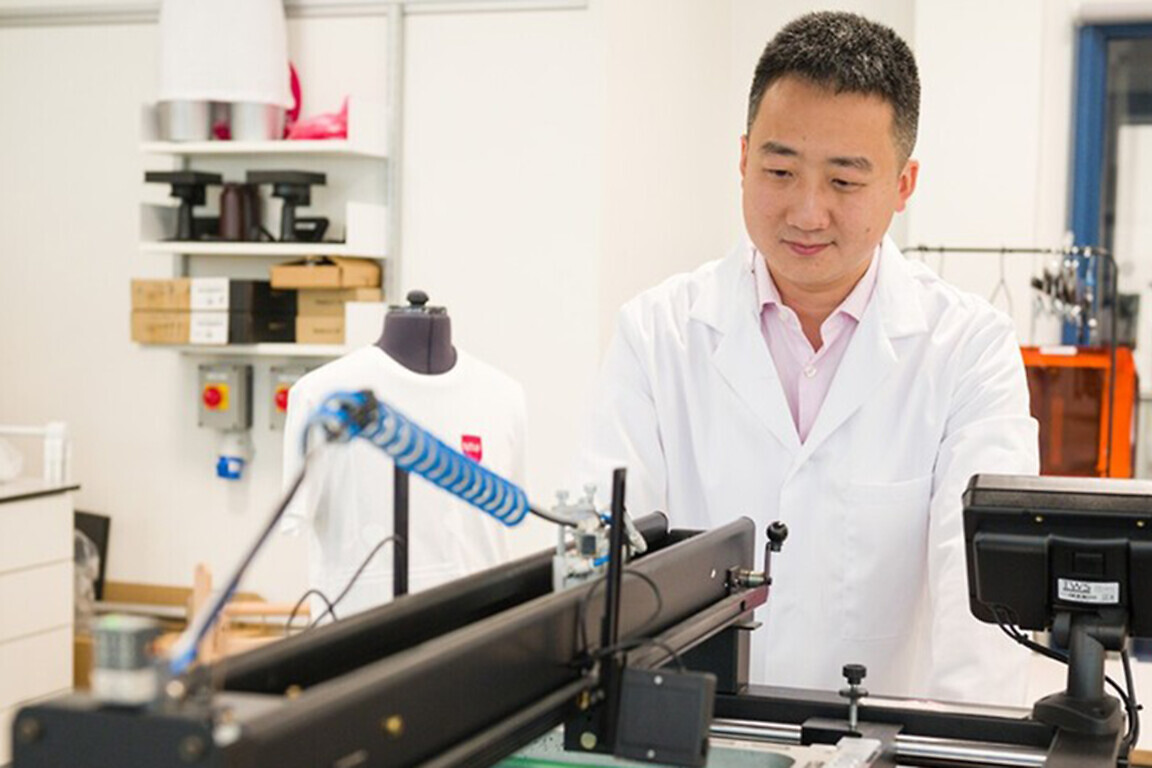Sarcopenia remains difficult to diagnose, although muscle weakness and associated falls are estimated to cost the UK alone £2.5 billion a year.
Scientists at Nottingham Trent University (NTU), Newcastle University and Axomics Medical are developing a smart textile band which aims to detect and monitor sarcopenia, an age-related condition defined as loss of muscle mass, function and power.
Called the Axoband, it will feature fully screen-printed flexible electrodes to measure electrical signals generated by the muscles. It will also include an embedded electronic sensor capable of tracking movement. The device is designed to be worn on the leg, will be low-cost to manufacture, and is stretchable and washable.
“There is currently no quality way to diagnose, monitor and assess sarcopenia,” said Yang Wei, principal investigator and professor of wearable technology in NTU’s Nottingham School of Art & Design and the academic lead of smart medical textiles.
“With sarcopenia becoming a growing problem in an ageing population, this is crucial in ensuring people are diagnosed more quickly and efficiently, allowing the right measures to be put in place as soon as possible,” he continued.
Quality of life
Sarcopenia affects about 10% percent of people over 60 and is as common as Type 2 diabetes. It impacts quality of life and is associated with reduced mobility and an increased risk of falls.
There is also a high economic burden, with muscle weakness and associated falls estimated to cost the UK alone £2.5 billion a year. The number of people diagnosed globally is forecast to rise by more than a quarter in the next 25 years as the population ages.
Despite its prevalence, sarcopenia remains difficult to diagnose due to the lack of objective, quantitative tools, something which also hampers the development of effective treatments aimed at improving muscle mass and function.
Having an accurate method of diagnosing sarcopenia and monitoring progression will enable clinicians to start treatment earlier, as well as identify effective treatments, which can include nutritional, exercise and pharmaceutical interventions. This will help reduce the severity or delay the onset of clinical frailty.
The development is being supported through funding from Wellcome Leap’s global Dynamic Resilience programme and the Temasek Trust.



